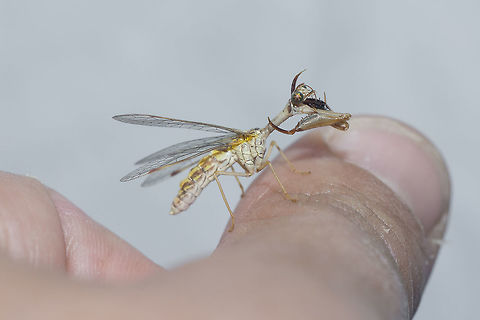
Mantispa styriaca is one of five species of Mantispa found in Europe. It belongs to the family Mantispidae, commonly called mantidflies or mantis-flies due to their praying-mantis-like front grasping legs.
Similar species: Net-winged Insects
JungleDragon is a nature and wildlife community for photographers, travellers and anyone who loves nature. We're genuine, free, ad-free and beautiful.

Mantispa styriaca is one of five species of Mantispa found in Europe. It belongs to the family Mantispidae, commonly called mantidflies or mantis-flies due to their praying-mantis-like front grasping legs.
comments (2)
hese stunning creatures are mantisflies (Order Neuroptera, Family Mantispidae)! There are approximately 400 species worldwide, with most living in the tropics. Depending on the species, adults may grow to 25 mm (1 in) in length. Mantisflies are predators and feed on a variety of insects, capturing prey in the same manner as a prating mantis.
Despite their common name, they are not flies, nor are they mantises. They definitely have a mantis-like appearance though, thanks to their raptorial front legs, large eyes, and triangular heads. But, they also have the abdomen and wings of a lacewing! This hodgepodge of parts makes them look like the insect version of a chimera!
As awesome as the adults are (just look at their eyes!), the larvae are arguably more weirdly spectacular. They are holometabolous, which means they undergo complete metamorphosis with the larvae looking nothing like the adults. They start life as tiny, very active larvae. They are constantly on the move, searching for…spiders! A larva must board a spider and ride around on it until the spider lays eggs. If it gets hungry during this time, it will feed on the spider’s blood. If a larva has the misfortune of boarding a male spider, it can move onto a female when the male copulates with one. When the female lays eggs, a mantisfly larva crawls onto them, get wrapped in the silk, and then feeds on the eggs. Eventually, it pupates and the adult emerges to begin the cycle again. #JungleDragon #Mantispidae #Mantidfly #Mantisfly
https://www.facebook.com/jungledragonwildlife Posted 5 years ago